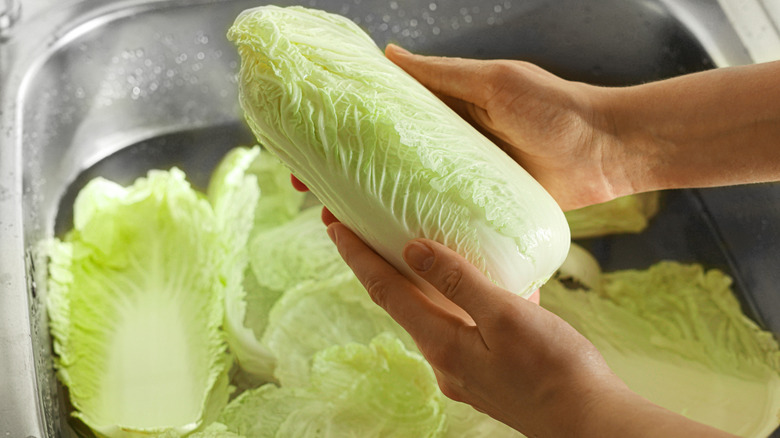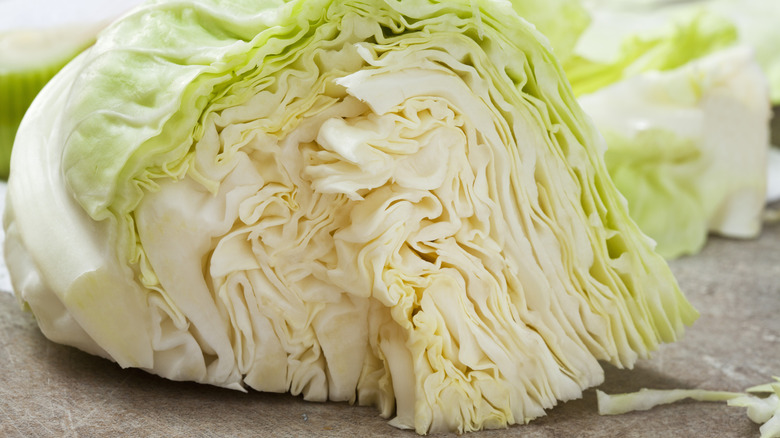How To Properly Wash Cabbage And Rinse Away Gunk Hiding In The Leaves
All varieties of cabbage grow close to the ground and remain there until they're ready to be picked, which makes dirt and bugs more likely to hide within the layers of leaves, especially in the larger varieties like green, purple, and Napa cabbage. This means it's important for fresh heads of cabbage to be thoroughly washed.
This can be done using common yet effective cleansing methods. One method is to wash each whole leaf one by one, the other is to cut the cabbage into quarters and wash each wedge. The way you plan to prepare the cabbage will often determine the best, most efficient washing method. Similar to removing dirt from a lettuce you should first peel off the outer two layers of cabbage leaves and discard them. Since these leaves are the toughest, they're not ideal to eat.
If you're going to use the leaves whole as a wrap to hold fillings, then each individual leaf will need to be carefully washed under a light stream of cool, running water, while you gently rub away any dirt with your fingers. The leaves can also be batch-washed by immersing them in a large bowl of cold water or cold water mixed with vinegar — ½ cup distilled white vinegar per 1 cup water. After a few minutes of soaking, strain the water from the cabbage using a colander and rinse. Blot each leaf dry with a clean towel to remove any excess moisture.
Washing in wedges and preventing spoilage
When using a head of cabbage for salads, slaws, stir-fries, or making it Japenese-style, you'll need to cut the head of cabbage into quarters (or smaller chunks depending on how big it is) and create wedges with the core still in-tact. The wedges can be washed in a similar way to whole leaves — either rinse them under cool, running water or submerge them in a cool water bath with or without vinegar. This method not only allows water to penetrate all the layers but, when ready to use, the leaves are still held together, which makes slicing, shredding, or chopping a breeze.
Another good tip to bear in mind when properly washing cabbage is that, just like other produce, you'll want to wash it when you're ready to use it rather than when you bring it home from the grocery store or garden. Washing cabbage, or any produce for that matter, and then storing it while wet, can cause it to become vulnerable to mold. If for whatever reason cabbage needs to be washed ahead of time, ensure that each layer is completely dry to help prevent spoilage, as well as storing it in the fridge in an air-tight container or sealed bag. If the refrigerator you're using has a crisper drawer, storing the cabbage here will also help it last longer.

